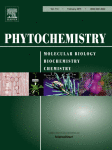View Item
- xmlui.general.dspace_homeCentros Regionales y EEAsCentro Regional Mendoza - San JuanEEA MendozaArtículos científicosxmlui.ArtifactBrowser.ItemViewer.trail
- DSpace Home
- Centros Regionales y EEAs
- Centro Regional Mendoza - San Juan
- EEA Mendoza
- Artículos científicos
- View Item
Fruit-localized photoreceptors increase phenolic compounds in berry skins of field-grown Vitis vinifera L. cv. Malbec
Abstract
Sunlight exposure has multiple effect on fruits, as it affects the light climate perceived by fruit photoreceptors and fruit tissue temperature. In grapes (Vitis vinifera L.), light exposure can have a strong effect on fruit quality and commercial value; however, the mechanisms of light action are not well understood. The role of fruit-localized photoreceptors in the control of berry quality traits was evaluated under field conditions in a commercial
[ver mas...]
Sunlight exposure has multiple effect on fruits, as it affects the light climate perceived by fruit photoreceptors and fruit tissue temperature. In grapes (Vitis vinifera L.), light exposure can have a strong effect on fruit quality and commercial value; however, the mechanisms of light action are not well understood. The role of fruit-localized photoreceptors in the control of berry quality traits was evaluated under field conditions in a commercial vineyard in Mendoza (Argentina). Characterization of the diurnal dynamics of the fruit light environment in a vertical trellis system indicated that clusters were shaded by leaves during most of the photoperiod. Supplementation of the fruit light environment from 20 days before veraison until technological harvest showed that red (R, 660 nm) and blue (B, 470 nm) light strongly increased total phenolic compound levels at harvest in the berry skins without affecting sugar content, acidity or berry size. Far-red (FR, 730 nm) and green (G, 560 nm) light supplementation had relatively small effects. The stimulation of berry phytochromes and cryptochromes favored accumulation of flavonoid and non-flavonoid compounds, including anthocyanins, flavonols, flavanols, phenolic acids and stilbenes. These results demonstrate that the chemical composition of grape berries is modulated by the light quality received by the clusters under field conditions, and that fruit photoreceptors are not saturated even in areas of high insolation and under management systems that are considered to result in a relatively high exposure of fruits to solar radiation. Therefore, manipulation of the light environment or the light sensitivity of fruits could have significant effects on critical grape quality traits.
[Cerrar]

Author
Gonzalez, Carina Veronica;
Fanzone, Martín Leandro;
Cortés, Leandro Emanuel;
Bottini, Ambrosio Rubén;
Lijavetzky, Diego Claudio;
Ballare, Carlos Luis;
Boccalandro, Hernan Esteban;
Fuente
Phytochemistry 110 : 46-57 (February 2015)
Date
2015-02
ISSN
0031-9422
Formato
pdf
Tipo de documento
artículo
Palabras Claves
Derechos de acceso
Restringido
 Excepto donde se diga explicitamente, este item se publica bajo la siguiente descripción: Creative Commons Attribution-NonCommercial-ShareAlike 2.5 Unported (CC BY-NC-SA 2.5)
Excepto donde se diga explicitamente, este item se publica bajo la siguiente descripción: Creative Commons Attribution-NonCommercial-ShareAlike 2.5 Unported (CC BY-NC-SA 2.5)

